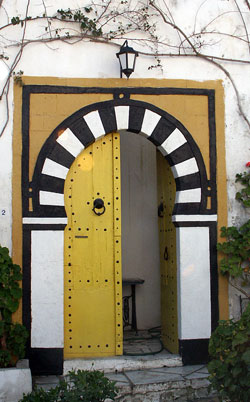
Cultural Spot ...
Xidi and Hongcun,
- Ancient Villages in China
Hongcun village, China
Xidi and Hongcun are two traditional Chinese villages located in Southern
Anhui Province in the Southeast part of China. Xidi and Hongcun are
exceptionally well preserved given the fact that traditional Chinese non-
urban settlements cultural nearly disappeared in most part of the country
during the 20th century. Xidi and Hongcun were listed by the UNESCO
as a World Cultural Heritage site in 2000.
The two villages are graphic illustrations of a type of human settlement
created during a feudal period and based on a prosperous trading economy.
In their buildings and their street patterns, they reflect the socio-economic
structure of a long, settled period of Chinese history.
Xidi is located in an area surrounded by mountains. Streams enter from the
north and east respectively, converging at the Huiyuan Bridge in the south of
the village. The streets are all paved with granite from Yi County. Narrow alleys
join the streets and there are small open spaces in front of the main public
buildings, such as the Hall of Respect, the Hall of Reminiscence and the
Memorial Archway of the Governor. The buildings, which are widely spaced,
are timber-framed with brick walls and elegantly carved decoration. Most of
them are built alongside the three streams, the Front Stream, the Back Stream
and the Golden Stream, which give a special character to the village.
Xidi was originally called Xichuan (meaning West River), because of the
streams that pass through it. It owes its growth to the Hu family from Wuyuan
(Xinan), who adopted a son of the Tang Emperor Zhaozong (888 - 904) after
the Emperor was forced from his throne in 904, naming him Hu Changyi.
One of his descendants moved his family from Wuyuan to Xidi in 1047. The
construction of a number of important private and public buildings began at
around that time. From the mid-17th century until around 1850, the Hu family
was influential in both commerce and politics. During the Ming and Qing
dynasties, members of the family became imperial officials, while many also
became graduates of the Imperial College.
The more grandiose residential buildings, dignified with the title of 'hall', have
complex ground plans, but they are all variants of the basic pattern and conform
to the characteristic use of materials and decoration. The outer walls have very
small windows, for reasons of security, carved out of granite and decorated with
floral and geometric motifs. Many have small private gardens, usually in the front
courtyard, where ingenious use is made of limited space.
Hongcun lies at the foot of Leigang Mountain by the Southwestern slop of
Huangshan Mountain. The village faces south, with its central part lying at a point
central to the flanking mountains and rivers. The open watercourse runs through all
the houses in the entire village and forms two ponds, one in the centre (Moon Pond)
and the other to the south of the village (South Lake). The chequerboard pattern of
streets and lanes follow the watercourse, giving the village an unique overall
appearance. Somewhat later than Xidi, Hongcun fell into decline with the birth of the
Republic, but it still retains many of its fine buildings and its exceptional water system.
The architecture and carvings of the approximately 150 residences dating back to
the Ming and Qing Dynasties are said to be among the best of their kind in China.
One of the biggest of the residences open to visitors, Chenzhi Hall, also contains
The Moon Pond
Hongcun was founded in 1131 by Wang Wen, a Han dynasty general, and his
kinsman Wang Yanji, who brought their families from Qisu village to the upper part of
the stream near Leigang Mountain and built 13 houses there. The village knew two
periods of great prosperity, 1401-1620 and 1796 -1908. The Wang family became
officials, merchants and accumulated enormous wealth, which they used to endow
their village with many fine buildings. Around 1405, on the advice of geomancers, a
channel was dug to bring fresh water to the village from the West Stream. Some 200
years later, the water supply system of the village was completed with the creation of
the South Lake. The 19th and early 20th centuries saw the construction of a number
of imposing public buildings, such as the South Lake Academy (1814), the Hall of
Meritorious Deeds (1888), the Hall of Virtuousness (1890) and the Hall of Aspiration
(1855, rebuilt 1911).
An antique wedding bed, pure wooden with handcraft
The South Lake
Morning mists, gray tiles, white walls, stone bridges, water lily ponds, and hills at the
background, are all elements of traditional Chinese landscape paintings. Hongcun
Village has all of these features, and has been named "a village in the Chinese painting".
It is an inspiration for artists and film directors. Hongcun Village was the location for one
of the scenes in the movie "Crouching Tiger, Hidden Dragon", directed by Ang Lee.
(Reference: UNESCO & wikipedia)
